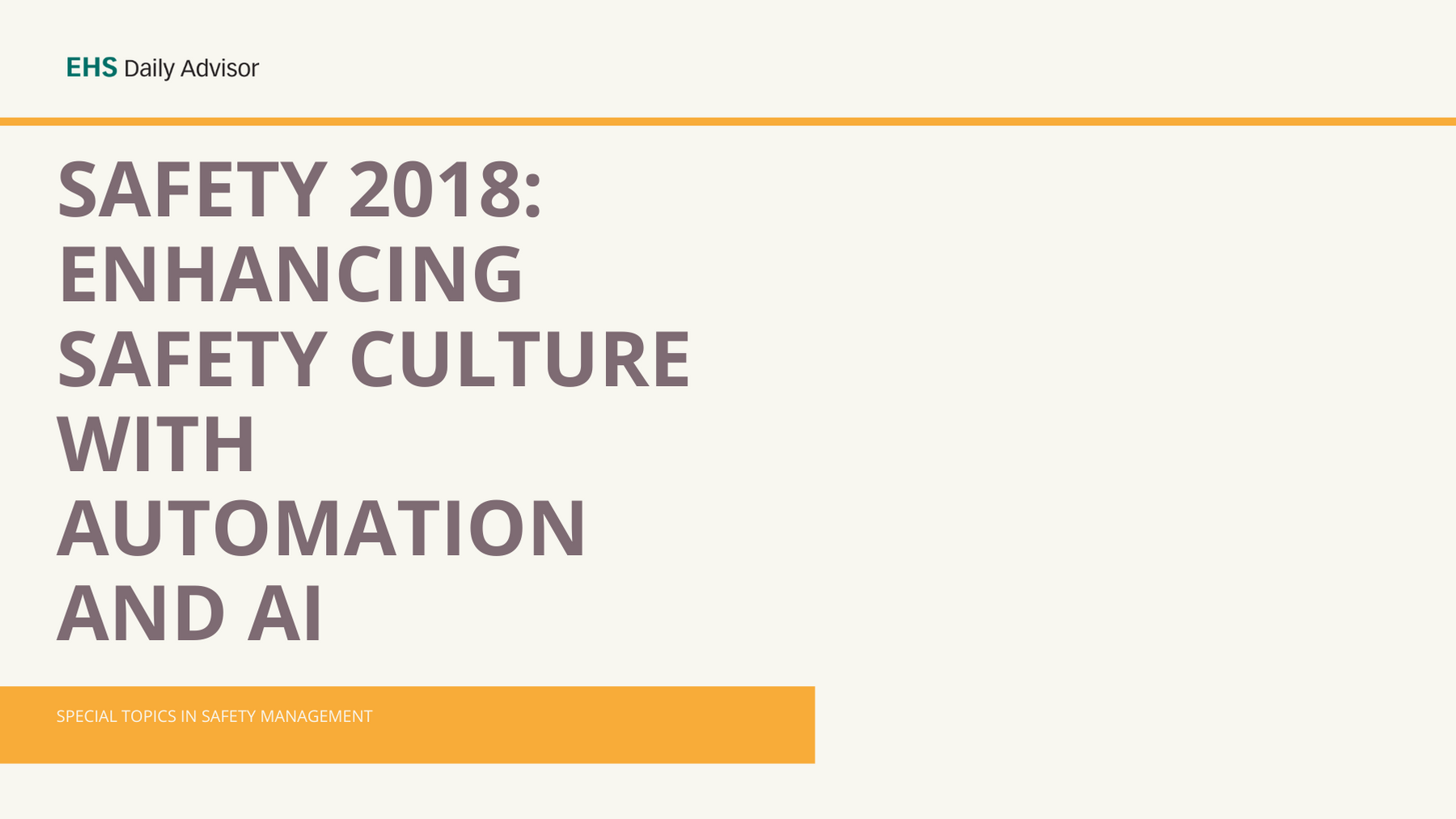
On the second day of the American Society of Safety Professionals’ (ASSP) Safety 2018 Conference and Exposition held in San Antonio, Texas, self-described futurist Mike Walsh, author of The Dictionary of Dangerous Ideas, energized the crowd of attendees by advocating an approach to safety and leadership that embraces automation, artificial intelligence (AI), and machine learning as valuable tools for safety programs of the 21st century.
By adapting to the world of rapidly evolving technological advances, business models, and competitive dynamics and by leveraging the expanded use of machine learning algorithms in daily life, Walsh argued that safety professionals will be able to create a meaningful safety culture and become effective “algorithmic” leaders of the safety industry.
Cutting Edge Advances
Perhaps the most tantalizing aspect of Walsh’s presentation for attendees was his description of the ways in which AI, automation, and advanced algorithms are being harnessed for the safety industry. For example, the algorithms currently being used to identify faces in photos or to program self-driving cars will soon be adapted to identify whether an employee on a work site is wearing the appropriate personal protective equipment (PPE) and to power self-driving forklifts. These algorithms can also be used to tailor safety training videos on learning platforms, analyze accident data more meaningfully, and inform predictive maintenance and safety protocols. Devices designed as part of the ever-expanding Internet of Things, such as augmented reality glasses and new safety equipment at construction sites, will also be able to suggest their own safe use to employees in real time.
Rather than fear or shy away from these new developments and how they reflect the rapidly changing dynamics and needs of the 21st century workplace, Walsh encouraged those present to adapt their leadership styles and safety programs to meet the shifting demands of employees and safety consumers.
Becoming an Algorithmic Safety Leader
To manage the challenges that come with constant advances in safety and business innovation, Walsh urged safety professionals to become what he termed “algorithmic leaders.” As part of this process, he asked attendees to consider the following aspects of their safety culture:
- People — Can you and your employees make decisions in ambiguous conditions as regulations, business, and technology continue to evolve?
- Productivity — How can you optimize productivity by striking a balance between automation and human ingenuity?
- Performance — How can you use data to build a compelling narrative, change behavior, and drive performance?
The Future of Safety
Walsh underscored the idea that as the technological and management landscape continues to change in the business world in general and the safety industry in particular, the demand for safety professionals will increase to meet evolving needs. Those who will thrive in this emerging environment, however, must make an effort to combine an understanding of human complexity with an appreciation for computational thinking. By recognizing the need to think quickly and in new ways, safety professionals will be best able to navigate the changes to come.

